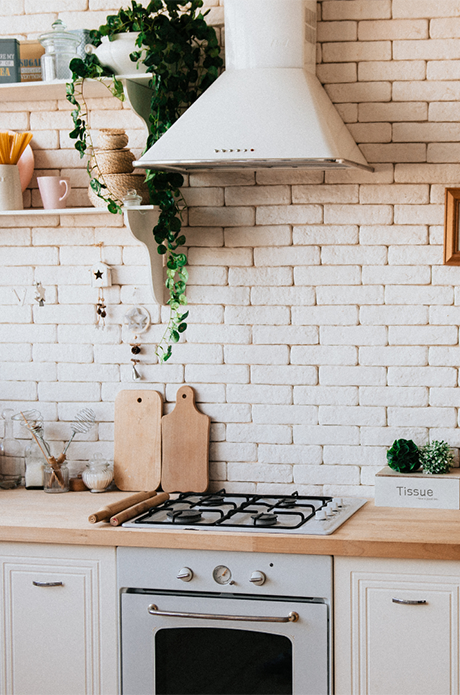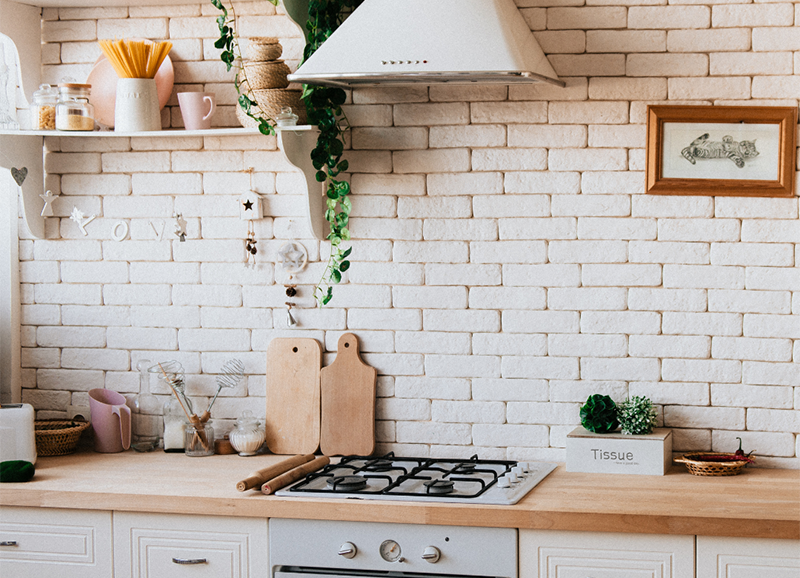Achieving a Zen Kitchen: How to Organise Your Kitchen Efficiently
28th November 2023

Imagine walking into the kitchen of your new 2 bedroom flat in Manchester and finding everything you need right where you expect it to be. In a world where time is precious and life can be hectic, an organised kitchen isn’t just a luxury – it’s a necessity. Did you know that according to a recent survey, clutter can lead to us feeling anxious and stressed so it’s no wonder that a tidy kitchen leads to a tidy mind!
In this guide, we’ll walk you through the transformative journey of turning your kitchen into a model of organisation and efficiency. From decluttering secrets to smart storage solutions, let’s embark on a culinary quest to reclaim your space and your peace of mind.
So, if you want to get your home back under control, learn how to organise your kitchen the right way.
The first step is to determine what to keep and throw away. Are there any products in your cupboards that you’ve used once and never touched again? What about old utensils you’ve forgotten to put in the bin?
Approach the decluttering process systematically. Work your way across the room in one direction, assessing the contents of your cupboards individually until all that’s left is the essentials.
Check the dates on perishable items such as pasta, butter, meat, poultry, eggs or dairy. Throw away anything past its expiration date and then move on to the non-perishables.
Non-perishables are canned, preserved or dried foods: while they’re good to have on hand and are generally safe to eat for years, you should always check that they’re not damaged in any way, as this will spoil the food inside.
Dispose of dented cans, and if you find you’ve got a surplus of non-perishable goods, why not donate them to your local food bank? You can get your kitchen back under control and help those who are short of food.
Next, move on to your drawers, where clutter can really build up! Start by looking at your cutlery drawer. Are there any knives, forks or spoons that are no longer usable? Lay them all out on your kitchen countertops for a clearer view of your set.
Perhaps you have duplicate utensils such as ladles, spatulas or tongs. By donating these items to a charity shop ensures that they’ll be well-used by someone who needs them more.
Don’t neglect your counters when learning how to organise your kitchen!
It’s one of the most overlooked areas. While having plenty of cookware and appliances in your kitchen can make mealtime more diverse, things like toasters, air fryers, pots and pans can take up what little space you have left.
A key strategy for maximising counter space is relocating bulky items. For example, a knife block on the door of a cupboard keeps your utensils within easy reach and simplifies your worktop.
Open shelving and vertical storage solutions are equally effective. Shelving offers additional storage without encroaching on valuable counter space, whether mounted on the backsplash, a wall, or even suspended from the ceiling.
If you often forget to put pans away, a pot rack may change your life. By mounting a rack near your stove to hang pots, pans, and colanders, you can free up cabinet space and have everything all in one place.
Your fridge and freezer are the two most important appliances in your kitchen. They’re essential for food freshness, and keeping them organised is a great way to minimise waste. Plus, it means you’ll have a much easier time cooking meals.
Approach fridge organisation by considering each zone separately: you have the drawers, interior shelves and the door. The door, being the warmest part of the fridge, is ideal for storing salad dressings, condiments and various sauces.
Group them in any way you see fit, whether savoury next to sweet or spicy, keeping similar items close by will mean you know where everything is. You can also use the door for storing butter, soft cheeses, drinks, and certain oils. Remember: sesame and walnut oils need refrigeration, while olive and vegetable oils do not.
Use the top shelf for prepared foods, leftovers in transparent containers, dips, salsas and chilled desserts such as cakes and pies. The middle shelf can hold eggs, melons, hard cheeses, and ready-to-eat fruits and veggies. Milk, snacks, drinks, and tender herbs should be on the bottom shelf for easy access.
Organising your kitchen takes time, but that’s not the hard part: the hard part is keeping it clean!
Always start by decluttering your counters, categorising items, and storing away non-essential things (like less frequently used appliances). Invest in organisers to keep your space clean in the long term, and establish a routine for regular cleaning.
By taking the time to organise your kitchen once a week, once a month or a dedicated day wherever you’re free, maintaining order will become much easier.
Interested in buying a new home at Victoria Riverside, get in touch today.